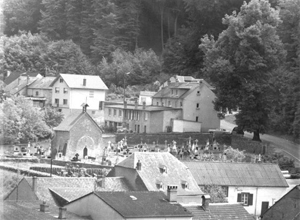 When you visit the old Hostert cemetery, you put your feet on historic ground.
When you visit the old Hostert cemetery, you put your feet on historic ground.
In fact many old debris and ruins reminds us of the rich historic background of the cemetery and going back to times of the Celtic colonisation when the site was called “Andethanna” (Anven) or and when it had been a Gallo-roman fort.
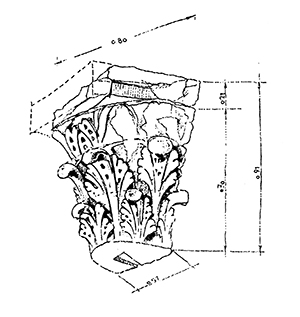
Fragment of an old Corinthian archit capital
The excavation of an old Corinthian archit capital, found in 1970 had been an important discovery. The fragment is made out of coral limestone from Differdange or Audun and had probably been an element of a monument or even a temple.
Until the year 1850, all the dead from the parish of Hostert and Niederanven and until 1890 also those from Ernster were buried at this old cemetery.
In 1969 the cemetery was extended. In the new section you can find the tombs from 1980 until 1990 and in the old part there are tombs going back up to the 19th century.
Another monument was standing in the entrance of the cemetery: the old lime tree of Justice. Already during the “Ancien Régime” times, people met there, in the shadow of this mighty tree to discuss and debate the “Jahrgeding”. For many years later the tree served as a meeting point for juristic matters.In 1974 however this natural monuments broke apart and had to be cut down.
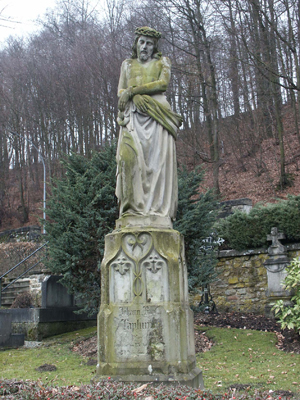 The most important monument is that of the local priest Jean Laplume (1797 – 1869), buried in front of the cemetery chapel. He died of as a victim of a violence felony.
The most important monument is that of the local priest Jean Laplume (1797 – 1869), buried in front of the cemetery chapel. He died of as a victim of a violence felony.
The figurative tombstone was created by Jos Fischer from Grevenmacher. It is composed by an “Ecce homo” statue, showing the dates of the priest’s life and an appraisal of his merits.
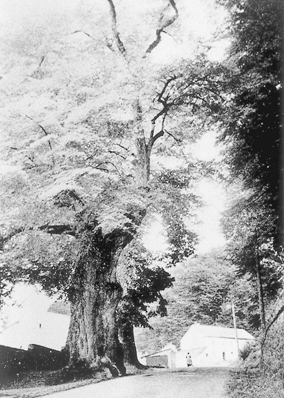 Another monument was standing in the entrance of the cemetery: the old lime tree of Justice. Already during the “Ancien Régime” times, people met there, in the shadow of this mighty tree to discuss and debate the “Jahrgeding”. For many years later the tree served as a meeting point for juristic matters.
Another monument was standing in the entrance of the cemetery: the old lime tree of Justice. Already during the “Ancien Régime” times, people met there, in the shadow of this mighty tree to discuss and debate the “Jahrgeding”. For many years later the tree served as a meeting point for juristic matters.
In 1974 however this natural monuments broke apart and had to be cut down.
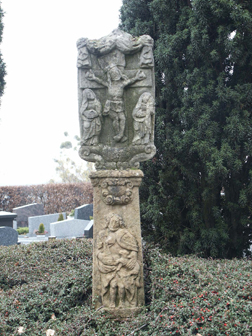 The old road cross is dated early 19th century and is composed by two different elements from two other road crosses. The upper part shows a relief of a crucifixion scene, made out of a grey stone. It is standing upon a stele formed base made of yellow sandstone, showing a St.John figure. An inscription says the names of “Caterrin Lorens, Maria Lorens” and goes back to the year 1809.
The old road cross is dated early 19th century and is composed by two different elements from two other road crosses. The upper part shows a relief of a crucifixion scene, made out of a grey stone. It is standing upon a stele formed base made of yellow sandstone, showing a St.John figure. An inscription says the names of “Caterrin Lorens, Maria Lorens” and goes back to the year 1809.
The figures and style themes, like covings, cartouches and a garland like drapery are all made in a baroque style.
